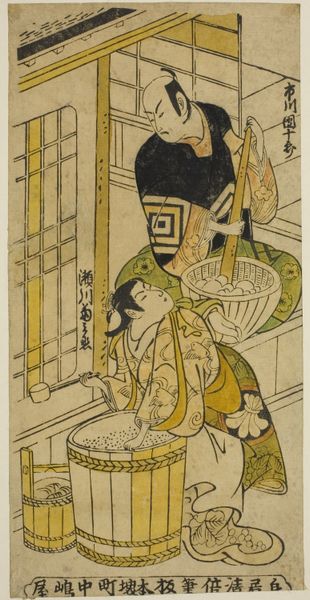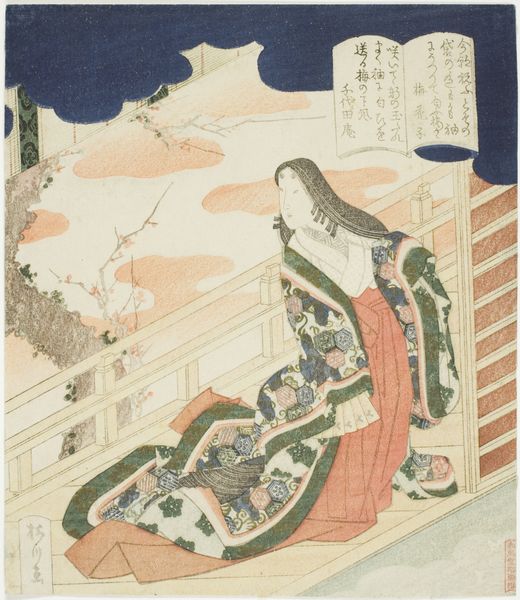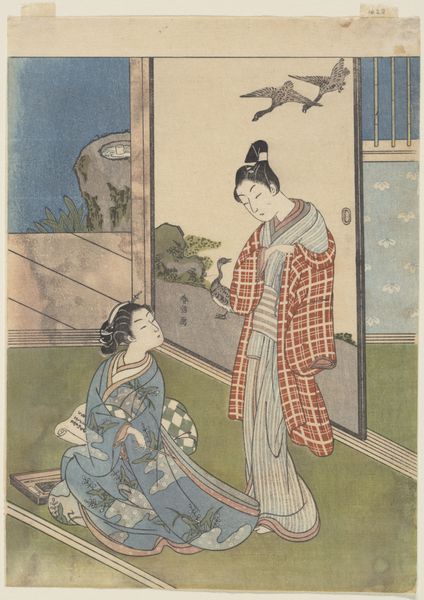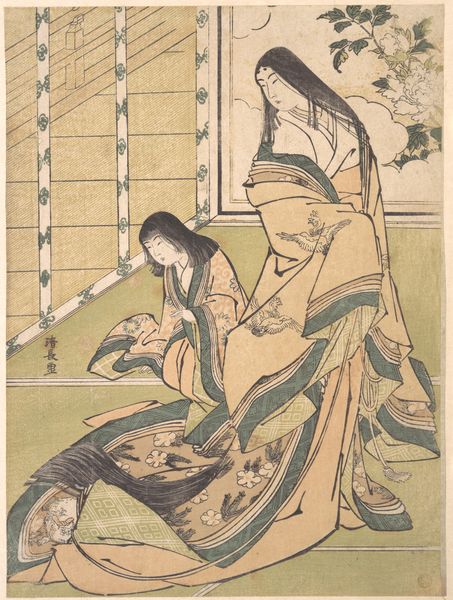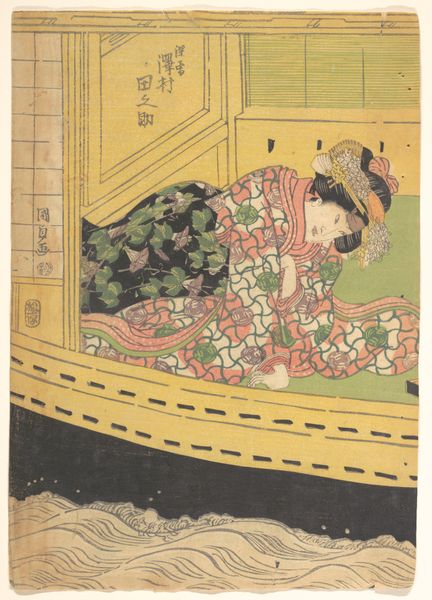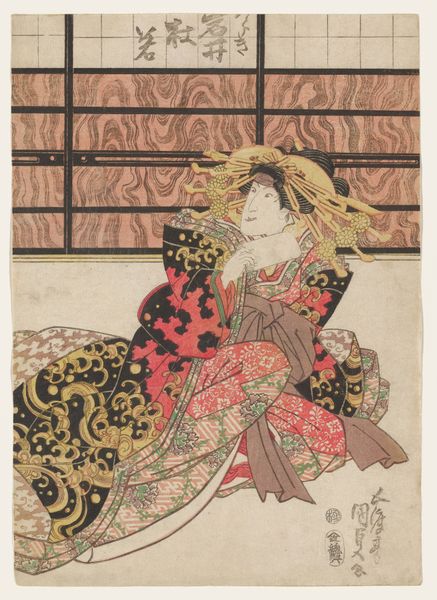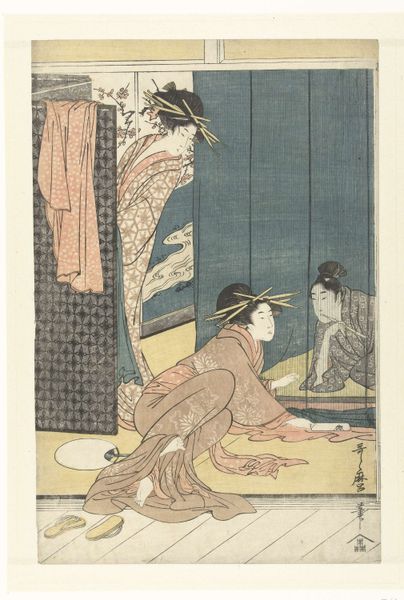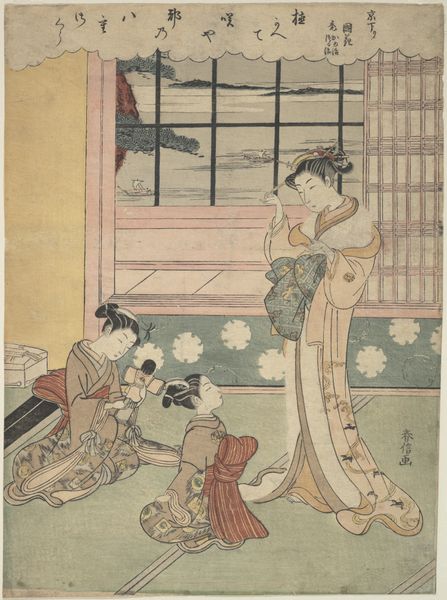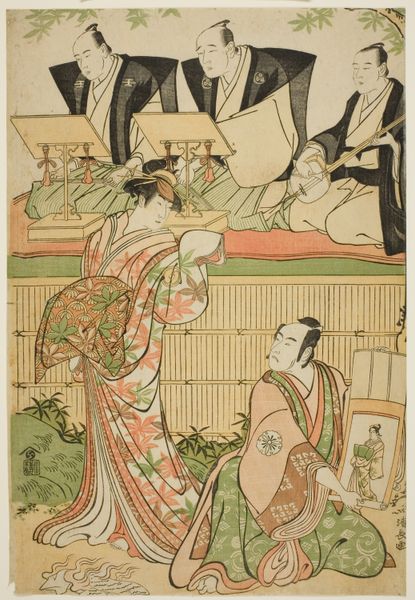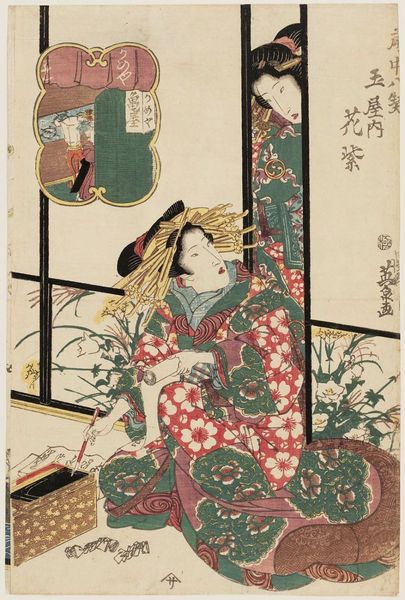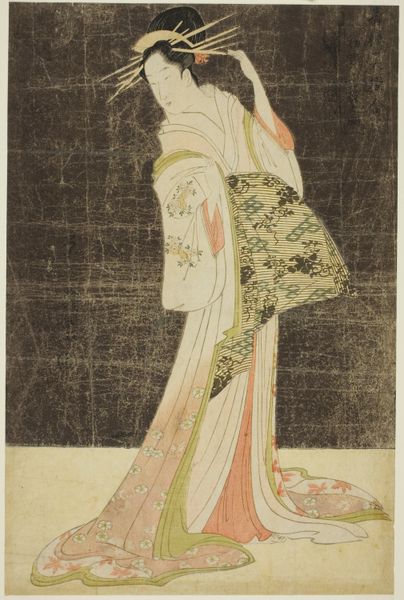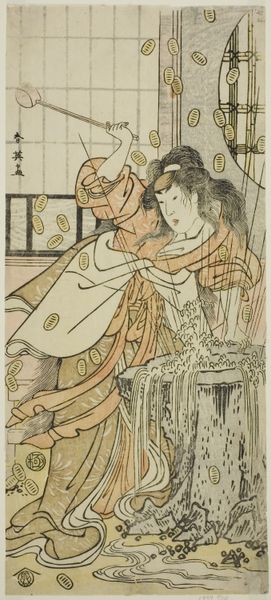
print, woodblock-print
#
portrait
#
narrative-art
# print
#
asian-art
#
ukiyo-e
#
woodblock-print
Dimensions: 15 3/4 × 10 1/4 in.
Copyright: Public Domain
Curator: Here we have Utagawa Toyokuni I’s woodblock print, "The Third Princess," or "Nyosan no miya," created around 1792. It’s currently held here at the Art Institute of Chicago. Editor: It's immediately striking; a muted color palette, primarily greens, peaches, and creams. The overall feeling is introspective. It is really quite large. What are your thoughts? Curator: It resonates deeply with the societal position of women at the time, particularly those of high status. Confined, in many ways, by expectation. Notice her gaze— averted, downcast. It reflects the limitations placed on women's agency and self-expression. Editor: The patterns and fabrics are meticulously rendered—you can practically feel the weight of the silks. I’m particularly interested in the labor that went into creating those details. It would have been a painstaking process to design, carve, and print each individual color. Also, notice that small dog tugging on the train of the kimono; this really shows that dichotomy of leisure and laborious attention to detail that’s really emphasized through the medium. Curator: Absolutely. The textiles become a form of silent language, a visual marker of her rank but also a symbol of the material constraints within her gilded cage. It reminds me of the critical discourse surrounding identity construction through costume— the complex intersection of beauty, power, and control. How are these prints read by everyday people in society? Editor: Right, well, I see that process is inextricably linked to consumption here, which is essential for understanding the social dynamics around Ukiyo-e prints in this time. Curator: Thinking about this from an intersectional feminist perspective really brings up essential discussion points— power and oppression. Editor: Yes, by highlighting the materials and techniques used to create the artwork, we’ve come away with so much to discuss about its cultural meanings! Curator: Indeed. Bringing in our particular approaches adds to the historical and contemporary perspectives to these stories. Editor: Exactly. Each of us emphasizing how art continues to give us the capacity to deepen those views through conversation.
Comments
No comments
Be the first to comment and join the conversation on the ultimate creative platform.
